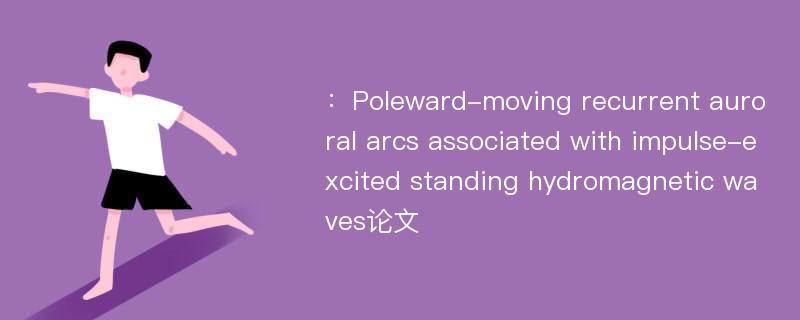
本文主要研究内容
作者(2019)在《Poleward-moving recurrent auroral arcs associated with impulse-excited standing hydromagnetic waves》一文中研究指出:In Earth’s high-latitude ionosphere, the poleward motion of east–west elongated auroral arcs has been attributed to standing hydromagnetic waves, especially when the auroral arcs appear quasi-periodically with a recurrence time of a few minutes. The validation of this scenario requires spacecraft observations of ultra-low-frequency hydromagnetic waves in the magnetosphere and simultaneous observations of poleward-moving auroral arcs near the spacecraft footprints. Here we present the first observational evidence from the multi-spacecraft THEMIS(Time History of Events and Macroscale Interactions during Substorms) mission and the conjugated all-sky imager to support the scenario that standing hydromagnetic waves can generate the quasi-periodic appearance of poleward-moving auroral arcs. In this specific event, the observed waves were toroidal branches of the standing hydromagnetic waves, which were excited by a pulse in the solar wind dynamic pressure. Multi-spacecraft measurements from THEMIS also suggest higher wave frequencies at lower L shells(consistent with the distribution of magnetic field line eigenfrequencies), which indicates that the phase difference across latitudes would increase with time. As time proceeds, the enlarged phase difference corresponds to a lower propagation speed of the auroral arcs, which agrees very well with the ground-based optical data.
Abstract
In Earth’s high-latitude ionosphere, the poleward motion of east–west elongated auroral arcs has been attributed to standing hydromagnetic waves, especially when the auroral arcs appear quasi-periodically with a recurrence time of a few minutes. The validation of this scenario requires spacecraft observations of ultra-low-frequency hydromagnetic waves in the magnetosphere and simultaneous observations of poleward-moving auroral arcs near the spacecraft footprints. Here we present the first observational evidence from the multi-spacecraft THEMIS(Time History of Events and Macroscale Interactions during Substorms) mission and the conjugated all-sky imager to support the scenario that standing hydromagnetic waves can generate the quasi-periodic appearance of poleward-moving auroral arcs. In this specific event, the observed waves were toroidal branches of the standing hydromagnetic waves, which were excited by a pulse in the solar wind dynamic pressure. Multi-spacecraft measurements from THEMIS also suggest higher wave frequencies at lower L shells(consistent with the distribution of magnetic field line eigenfrequencies), which indicates that the phase difference across latitudes would increase with time. As time proceeds, the enlarged phase difference corresponds to a lower propagation speed of the auroral arcs, which agrees very well with the ground-based optical data.
论文参考文献
论文详细介绍
论文作者分别是来自Earth and Planetary Physics的,发表于刊物Earth and Planetary Physics2019年04期论文,是一篇关于,Earth and Planetary Physics2019年04期论文的文章。本文可供学术参考使用,各位学者可以免费参考阅读下载,文章观点不代表本站观点,资料来自Earth and Planetary Physics2019年04期论文网站,若本站收录的文献无意侵犯了您的著作版权,请联系我们删除。
